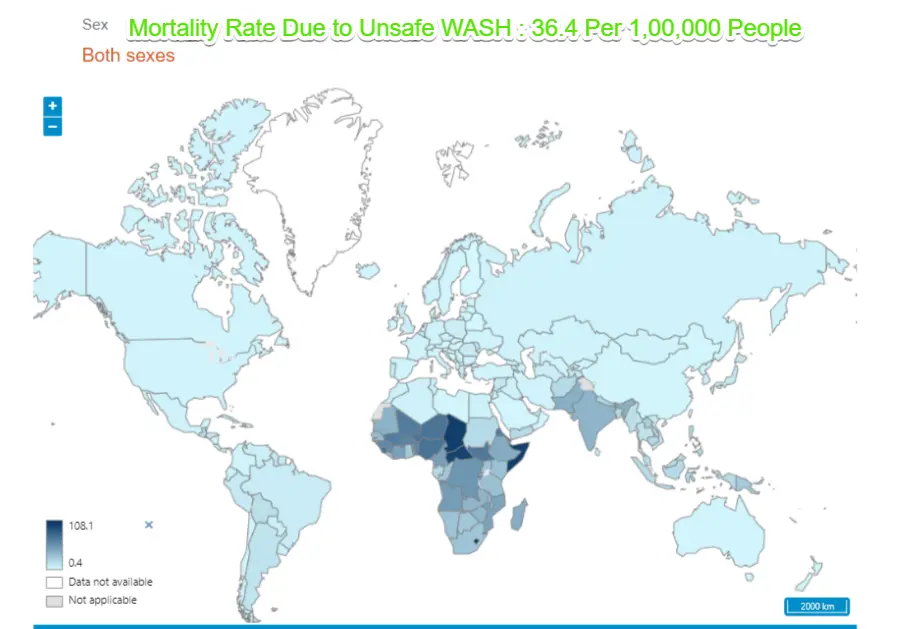Full form of WASH in Health
The full form of WASH is water, sanitization, and hygiene. The WHO WASH report on India is represented here.
WASH Report on India 2019
- According to World health Organization report, millions of people globally do not access safe drinking water, sanitation and hygiene services so suffer from multiple preventable illnesses. Unsafe wash causes, Infectious diseases, health risks from exposure to chemicals and other contamination from drinking water.
- According to report, safe drinking water, sanitation and hygiene could have prevented at least 1.4 million deaths and 74 million disabilities adjusted in year 2019. Dr Maria Neira, Director, WHO Department of Environment, Climate Change and Health said that we have seen improvements in WASH service levels over the last 10 years, but progress is uneven and insufficient.
The WHO report estimates based on four health outcomes
- Diarrhea
- Acute respiratory infections
- Under nutrition
- Soil transmitted helminthiases
- Due to diarrhea, over one million death and 55 million DALYS ( One DALY represents the loss of the equivalent of one year of full health. ) The second largest contributor was acute respiratory infections from inadequate hand hygiene, which was linked to 356 000 deaths and 17 million DALYs.
- Among children under five, unsafe WASH was responsible for 395 000 deaths and 37 million DALYs, representing 7.6% of all deaths and 7.5% of all DALYs in this age group. This included 273 000 deaths from diarrhea and 112 000 deaths from acute respiratory infections.
- These diseases are the top two infectious causes of death for children under five globally.
- All WASH attributable deaths occurred in the WHO African and South – East Asia regions, whereas 89% of attributable deaths were low and lower middle-income countries. However, high incomes countries have risk of 18% could be prevented through improved hand hygiene practices.
Mortality rate due to water, sanitation and hygiene
WASH Report on India: Diarrhoea Death due to unsafe drinking water
|
All age groups |
203863 |
|
< 5 years |
20045 |
|
Male |
79898 |
|
female |
123964 |
WASH Report on India: Diarrhoea Death From Inadequate Sanitation
|
All age groups |
244287 |
|
< 5 years |
24020 |
|
Male |
95741 |
|
female |
148546 |
WASH Report on India: Diarrhoea Death due to Inadequate Hygiene
|
All age groups |
159015 |
|
< 5 years |
15635 |
|
Male |
62321 |
|
female |
96694 |
WASH Report on India: WASH Deaths
|
All age groups |
497738 |
|
Male |
199845 |
|
female |
297893 |
How to reduce WASH attributable burden of diseases?
Radically accelerate action to make safe WASH a reality for all
- By quantifying for the first time the health gains associated with higher WASH service levels, the updated estimates provide strong evidence to support efforts to take these commitments to action
Focus efforts on the poorest and most disadvantaged
- WASH services are typically among rural areas and lower socio-economic groups. As in the report even high-income countries, where access to safely managed drinking-water and sanitation services is generally high, certain marginalized communities are underserved and face higher risks
Adapt national monitoring systems to improve data on population exposure to safely managed services
- Data on higher levels of WASH services remain sparse in many countries. Governments should take some steps to adapt national and local monitoring systems taking into consideration the higher service levels called for in the SDG framework.
- It also focusses more accurate reflection of the full burden of disease associated with unsafe WASH.
You may also like to read these articles

